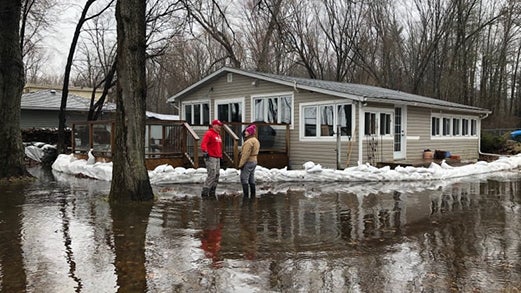Instead of trying to control or prevent flooding, residents should adapt their homes to withstand it, says an architect who develops amphibious homes.
"We need to let Mother Nature do more of what Mother Nature wants to do rather than humankind trying to control the water," Elizabeth English, an associate professor at the University of Waterloo School of Architecture, told the host of The Current.
In Canada, this spring's rainfall, compounded by melting snow, has led to states of emergency and evacuations in areas across Quebec, Ontario and New Brunswick.
English, who runs the Buoyant Foundation Project, explained that most homes on flood plains, if properly equipped, would be unscathed in flooding like Canadians are experiencing today.

"It lets the water go wherever the water wants to go and the house gets out of the way. So it doesn't try to compete," she said. "Humankind does the accommodation rather than trying to push the water around."
The vertical guidance system, she said, are posts that allow the house to slide up off of its foundation when water comes in, and then move back down to its original place once the water recedes.
This adaptive architecture is explored in the Netherlands, she said, but is not widely recognized in North America yet.
Read the full article or listen to the conversation from CBC’s The Current.